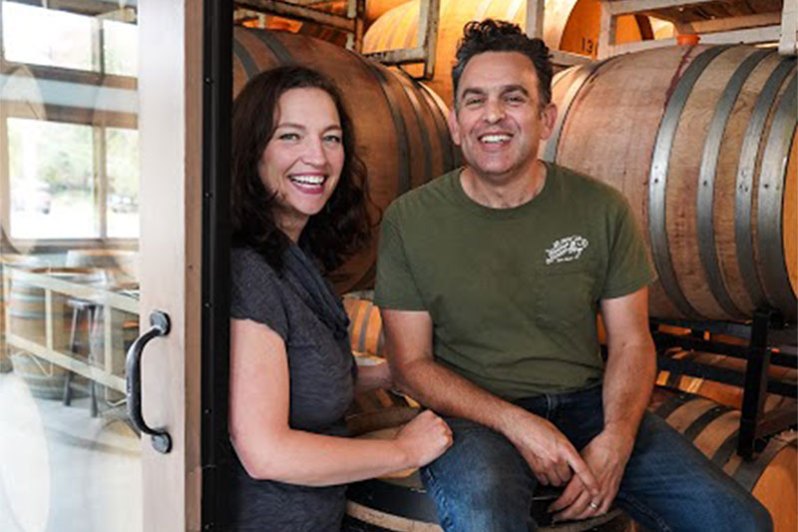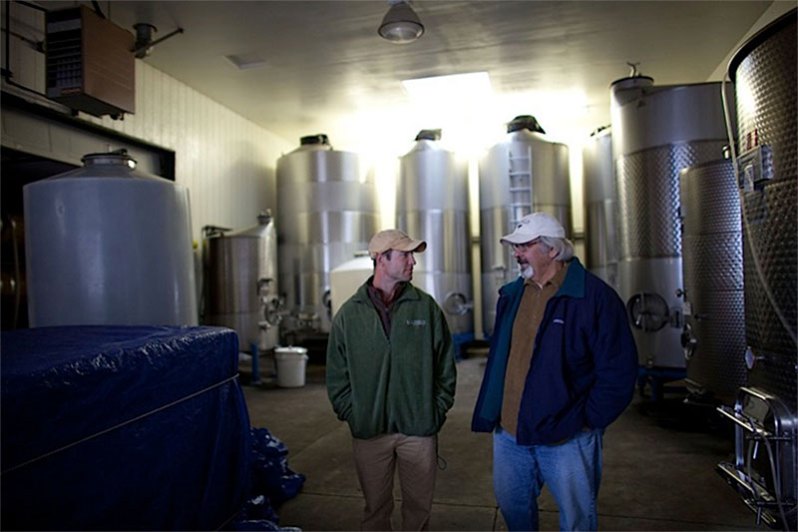In all facets of life we seem to be asking ourselves, over and over again, what’s essential? Sometimes the answer is obvious: Don’t swarm the beach, spring breakers. Other times it requires some head-scratching: Do I let the parents watch the grandchildren right now?
Dealing with a pandemic is pretty new to most of us so we understand that there are gray areas. Clearly, the health and safety of humanity is priority number one. But what is deemed essential as we begin to re-open the economy and look to avoid a second wave of C-19?

With wine, there’s a lot involved. From farming vineyard rows to fermenting juice in the cellar and selling the finished product in retail spots all over the nation and beyond, it’s an expansive beast. It’s a genuine perk that a lot of us get to enjoy convenient food and specialty items like wine mid-pandemic but it’s imperative we don’t lose sight of how these things arrive at our tables.
Related Reading
Jesse Lange is a second-generation winemaker at his eponymous Willamette Valley label. The Dundee Hills producer has roots that go back to 1987 and specializes in Pinot Noir, Chardonnay, and Pinot Gris, along with a palpable affinity for fly-fishing. Like all businesses, Lange has had to make some serious changes since the virus tightened its global grip.
“As far as sacrifices, we’ve made plenty of adjustments to keep our people and our customers safe and healthy,” he says. This includes a still-closed tasting room, which first locked its doors back in March. It was an easy decision to make as the pandemic broke, but an especially daunting one for the wine industry, which depends so much on seasonal tasting room traffic.
“Certainly, everybody’s schedule at the winery has been upended,” Lange continues. “Most of my squad in the vineyard and winery have young children, so we’ve had to be fluid in our approach to accommodate home schooling. That has been challenging, no doubt.”
It could be worse, of course. Presently, there are just a few folks in the cellar engaging in relatively low-key day-to-day tasks. With wines sleeping in barrels, much of the action is outside, in fast-growing vineyard rows. “I’m just thankful that the height — fingers crossed — of this C-19 pandemic didn’t occur during harvest,” he says. “I really feel for our friends and colleagues in the southern hemisphere.”
Matt Berson runs Portland Wine Company, operating out of an urban facility in the city. He says things have been moving more slowly in the cellar, with constant sanitizing of high-touch equipment. Several vintners operate out of a single space, so they’ve been taking turns tending to their wines and minimizing group activities as much as possible. “Winemaking hasn’t and can’t stop,” he says. “You have to top, rack, bottle.”
“We have run the bottling line a bit as necessary, but running it slower and with more space between the operators,” Berson says. He’s prepping for what could be a very different year of winemaking later summer and early fall, when the grapes come in. “I’m talking to friends in New Zealand and Australia about protocols that worked for them there,” he adds. “I think we’re all hoping things will be less stringent come September but we have to prepare for the worst.”

He’s most worried about the future of the business, noting that so much of his operation is dependent on still-closed restaurants all over the nation. “So that calls into question the foundation of our sales strategy,” he says. “It makes us rethink how much and what kinds of wines to make this harvest and next.”
The ripple effect is real and is cause for concern. “What weighs heaviest on my mind is the reverberations,” he says. “If I buy half as much fruit from a grower this year, what are they supposed to do? Do they have to lay off one of their tractor drivers? Or cut their crew? And that sale is income that they and their family won’t have. And money they won’t spend in their community. You pull at a string and the whole thing frays. That’s what’s keeping me up nights.”
Back in wine country, Lange credits his team amid the pandemic, which has been together for a long time and adapts particularly well (to an industry that’s always dealing with something, from phylloxera to wildfire smoke to pests). He says spacing outside is pretty easy, given the size of the vineyards and the farming that’s necessary. They’re staying out of smaller, confined spaces like offices and cleaning constantly.
“Harvest could certainly look different,” he admits. He says he’s currently contemplating what exactly that looks like and is refining concepts along the way. “The sorting line will have to look different, no doubt. But punchdowns are individual, as is much of what we do.”
Mixing a little wine — or promise thereof — into the work-from-home routine also doesn’t hurt. Lange says he’ll occasionally sneak away to the cellar to grab an older Pinot, Brunello, Barbaresco or Rioja, pulling the cork in the early afternoon so the wine has plenty of time to breathe. That sets Lange up with an anticipatory smile on his face for the remainder of his shift.


